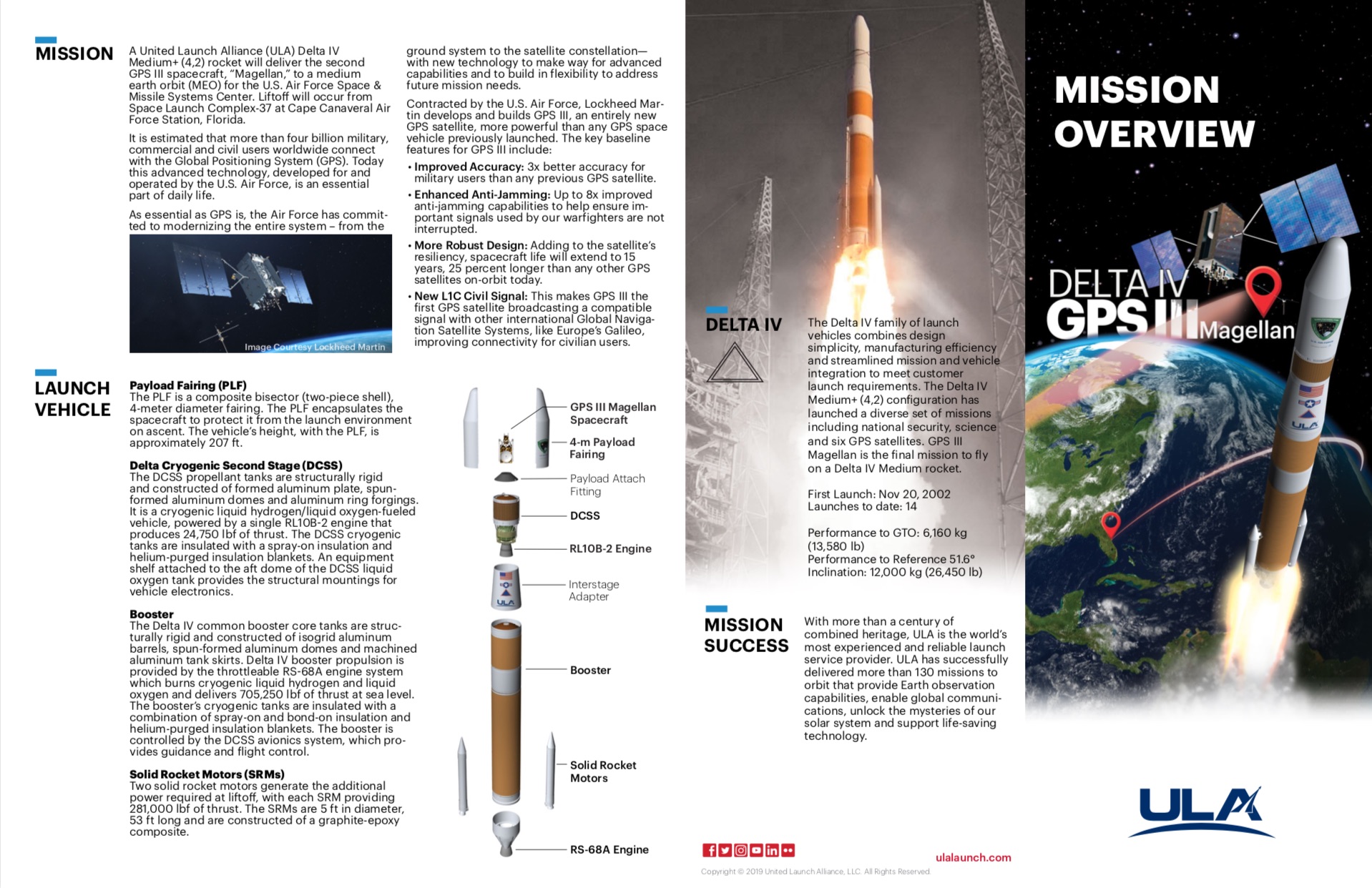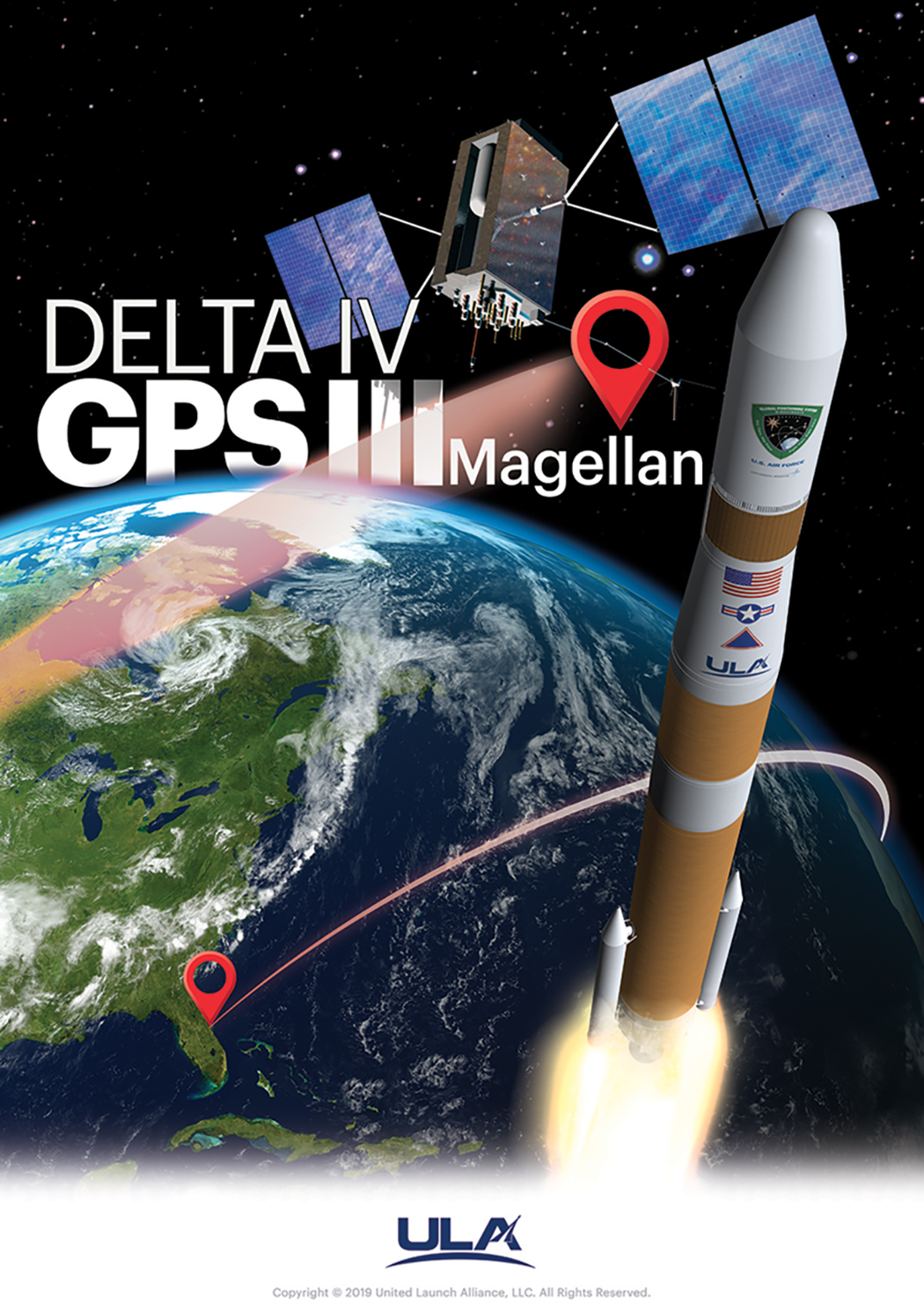The Delta IV rocket
United Launch Alliance’s Delta IV rocket has served the nation’s high-priority U.S. Air Force and National Reconnaissance Office space programs with distinction since entering service in 2002. The vehicle also launched NASA’s Orion capsule on its first orbital test flight and sent the Parker Solar Probe on its journey to become the fastest robot in history while surfing through the sun's atmosphere. Having flown 38 missions in a variety of configurations ranging from medium-lift to heavy-lifter, the Delta IV continues the legacy of the Delta rocket family that dates to 1960.
GPS III SV02 will launch aboard a Delta IV Medium+ (4,2) rocket that features one hydrogen-fueled common booster core, two solid rocket motors and a four-meter-wide Delta Cryogenic Second Stage. The payload is protected during atmospheric ascent by a composite payload fairing.
A United Launch Alliance (ULA) Delta IV Medium+ (4,2) rocket will deliver the second GPS III spacecraft, “Magellan,” to a medium earth orbit (MEO) for the U.S. Air Force Space & Missile Systems Center. Liftoff will occur from Space Launch Complex-37 at Cape Canaveral Air Force Station, Florida.

Space Launch Complex 37
Space Launch Complex 37, the East Coast home of the Delta IV rocket at Cape Canaveral Air Force Station in Florida, is a classic launch pad design with a Fixed Umbilical Tower (FUT) and a Mobile Service Tower (MST). The core stages of the rocket are assembled in the nearby Horizontal Integration Facility, then rolled to the pad for attachment of the payload, final testing and the countdown. The mobile gantry is retracted to unveil the rocket several hours before liftoff.
NASA constructed SLC-37 in the 1960s for uncrewed test flights in the Apollo-Saturn program. The pad was rejuvenated in an extensive overhaul to support the Delta IV starting in the late 1990s.


